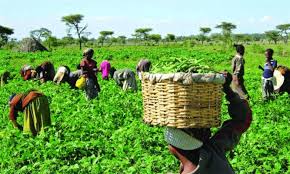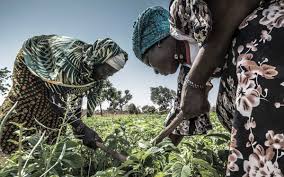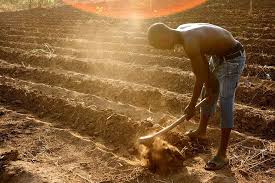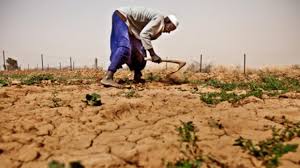This article explores the agricultural relevance of food security, poverty, and famine, including their interrelationship.
It explains their implications on national development, economic sustainability, and the roles of government in addressing food insecurity.
Concept of Food Security and Poverty in Agricultural Communities
Globally, almost 852 million people are chronically hungry due to extreme poverty, while up to 2 billion experience intermittent food insecurity caused by varying degrees of poverty.
Over 60% of the world’s undernourished population reside in Asia, and a quarter in Africa. The proportion of hungry people is greater in Africa (33%) than in Asia (16%).
According to FAO data from 2009, 22 countries, 16 of which are in Africa, have an undernourishment prevalence rate exceeding 35%.
Although sustainable development lacks a single, universally accepted definition of food security, the 1992 FAO/WHO International Conference on Nutrition defined it as access by all people at all times to the food required for a healthy life.
Food security comprises three main dimensions:
- a safe and nutritionally adequate food supply at national and household levels,
- a reasonable degree of supply stability throughout each year and between years
- every household’s physical, social, and economic access to sufficient food.
Poverty is regarded as the inability to access basic life necessities. An individual is considered poor if access to food, shelter, and clothing is lacking.
Since 1981, cases of extreme poverty (defined as living on less than \$1.08 per day) have increased from about 848 million to approximately 873 million by 1999. Moderate poverty cases rose by 36% in the same period, from about 1.57 billion to around 2.1 billion.
It is estimated that \$166 of additional production is required to reduce poverty by just \$1 under current economic models. Therefore, production efficiency must align with consumer needs.
Poverty also follows specific patterns. Currently, 7 out of every 10 individuals living in extreme poverty reside in villages and rural areas.
However, the search for better education, healthcare, and income is causing a migration of poverty from rural to urban areas, where many end up facing despair and destitution.
Read Also: 12 Medicinal Health Benefits of Emilia Sonchifolia (lilac tasselflower)
Concept of Food Security and Famine in Agricultural Development

While there is broad agreement on the fundamental requirements for food security, interpretations differ among experts regarding the biological and nutritional specifics.
Non-scientific publications often fail to distinguish between hunger, malnutrition, famine, and starvation, or between chronic and transitory hunger.
The term security originates from the Latin word securus, meaning safe or free from worry. Individuals with food security are protected from famine, starvation, chronic hunger, and malnutrition.
Famine refers to food scarcity across large populations, and starvation comes from an Old English term describing death from prolonged deprivation of food, water, or due to cold or disease.
Food security today is defined as physical and economic access by all to safe, sufficient, culturally acceptable, and nutritious food needed for a healthy and active life (FAO, 2008).
Famine, often seen as a natural disaster, is actually a social hazard influenced by human action, including warfare, terrorism, or civil conflict.
Sen (1981), in his analysis of the Great Bengal Famine of 1943, argued that the famine was not caused by drought but by government failure to counter food hoarding by corrupt politicians. He emphasized that famine depends more on people’s legal entitlement to food than on natural factors.
Concept of Food Security, Income and Poverty in Agricultural Households
Technically, food security hinges on a balance among income, demand, supply, and food distribution. Food production covering crops, livestock, and fisheries must grow to meet increasing and changing needs of growing populations.
Post-production systems must be efficient to ensure safe storage, processing, and distribution integrated with production systems.
Food security is not equivalent to food sufficiency, which implies national capacity to meet food needs without external help.
Factors such as climate, terrain, and soil prevent many countries from being food self-sufficient, requiring imports or food aid.
Reducing food spoilage after harvest especially through the provision of preservation and protection facilities in rural farming areas can significantly enhance food availability.
Food insecurity, chronic hunger, and undernutrition are consequences and indicators of extreme poverty. People with access to money and assets rarely suffer from hunger.
Political leaders or military officials are seldom affected by food insecurity. Addressing this issue requires improved employment opportunities and fair access to resources.
Gender and Poverty in Rural Agriculture

Economists define poverty as lacking purchasing power, while affluence represents maximum purchasing power. This view helps in understanding access to resources in society.
Three main types of poverty have been identified:
1. Absolute poverty: associated with a lack of basic resources, income, and security.
2. Relative poverty: results from having significantly worse outcomes than others in a similar society, with limited means for change.
3. Zero-sum poverty: involves exploitation and suppression by powerful individuals or systems.
In rural areas, poverty is often a combination of all three types.
Poverty affects genders differently, with women being more affected due to:
1. Gender disparities in empowerment, education, and asset ownership.
2. Higher aversion to risk among women in rural economic activities.
3. Cultural preferences for educating male children over females.
Ways to reduce poverty among women include:
1. Implementing empowerment programmes for women
2. Prioritising girls’ and women’s education
3. Creating employment opportunities for women
4. Institutionalising gender-responsive budgeting across all government levels
5. Allowing women’s participation in decision-making projects
6. Providing credit facilities or soft loans through government and NGOs
7. Enforcing gender-equal policies alongside attention to people with disabilities
8. Promoting gender awareness among rural communities
Steps to ensure women’s inclusion in development projects:
i. Use appropriate communication channels targeting women
ii. Encourage women’s participation in community meetings
iii. Support women’s expression through local languages and spokespersons
iv. Organise separate meetings for women when necessary
v. Ensure both men and women contribute to decisions before and after projects
vi. Give priority to women’s votes when identifying community needs
Read Also: 17 Medicinal Health Benefits Of Lotus Seed (Nelumbo nucifera)
Public Policy and Food Security in National Agricultural Planning

Estimating global food security through total production divided by population may provide statistics but lacks practical use. While equitable global resource access is ideal, it remains unlikely.
Predicting that future food production must surpass that of the past 10,000 years offers little help to governments in planning.
Food security must be approached at the national, community, and household levels, a task that falls under government responsibility.
International organisations can assist by offering guidelines and development aid. The League of Nations in the 1930s emphasized planned nutritional policy, calling for:
1. Consumption strategies: ensuring essential food is accessible to everyone
2. Adequate supply: promoting production and fair distribution of essential food
They recommended:
- Recognizing nutrition as a national priority
- Expanding nutrition education
- Ensuring equitable income distribution
The poorest communities remain the most nutritionally deprived.
Governmental Responsibilities in Achieving Agricultural Food Security
Reutlinger (1987) attributed food insecurity to inappropriate macroeconomic policies and social structures that hinder food access. It can be short-term (transitory) or long-term (chronic), often due to poor resource planning and management.
Transitory hunger may stem from unstable food systems, rising prices, or decreased household income. Sen (1986) linked food security to legal entitlements and purchasing power, stressing that food availability depends on fair trade and not just national demand.
Social welfare systems are crucial, as the poor rely on food assistance. Malnutrition, resulting from unequal resource access, becomes a burden on the national economy.
Therefore, food and agricultural policies aimed at securing food access for all citizens must be prioritised by governments.
In agriculture, food security, poverty, and famine are interconnected issues that demand a multi-dimensional approach.
Governments must develop inclusive policies, improve rural infrastructure, support gender equality, and ensure equitable access to food and income.
Effective agricultural systems and social justice are key to overcoming hunger and ensuring sustainable national development.
Do you have any questions, suggestions, or contributions? If so, please feel free to use the comment box below to share your thoughts. We also encourage you to kindly share this information with others who might benefit from it. Since we can’t reach everyone at once, we truly appreciate your help in spreading the word. Thank you so much for your support and for sharing!

